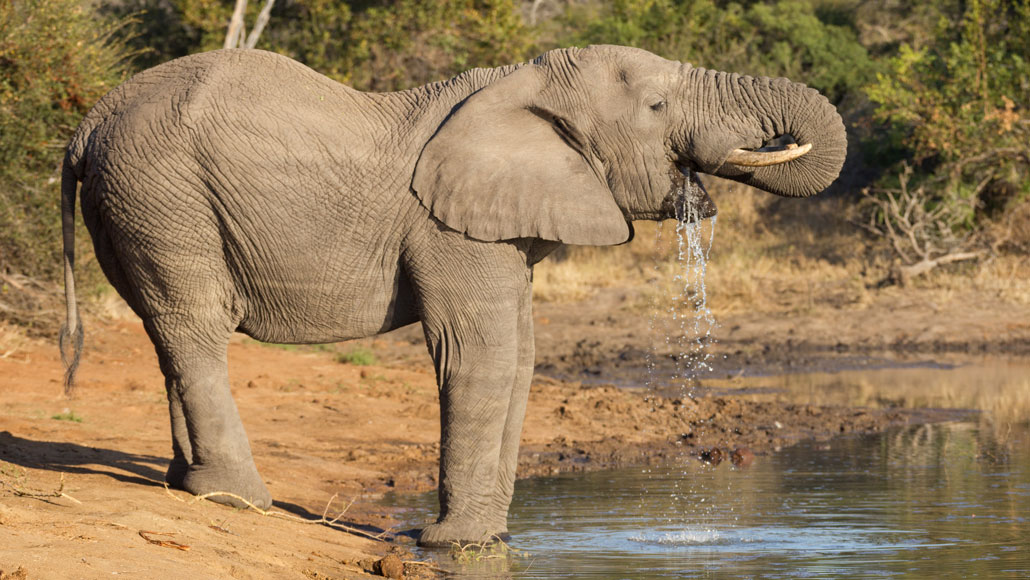Engineers surprised by the power of an elephant’s trunk
Air can move through it at hundreds of miles per hour

African elephants can expand their nostrils while snorting up water. It’s a previously unrecognized trick that boosts their trunk’s capacity.
StuPorts/istock/getty images plus
By Sid Perkins
A 34-year-old African elephant at Zoo Atlanta in Georgia has just taught engineers a thing or two about how to move water. For one thing, she showed that her trunk doesn’t operate as a simple straw. To suck up water, she dilates that trunk — expands it. This cuts how many snorts she’ll need to pull in drinking water or the moisture she uses to hose herself down.
Elephants are the only living land animals with a long, boneless trunk. A septum stretches its entire length. This creates two nostrils. But precisely how elephants use those muscular trunks for feeding was always been a bit of a mystery. So mechanical engineers at the Georgia Institute of Technology in Atlanta decided to take a few peeks.
Andrew Schulz led the group. Other than aquatic animals, he notes, few creatures other than pachyderms suck up food using something other than simple lung power. Using ultrasound, his team monitored that interior trunk action. In some trials, the elephant snorted up known volumes of water. Other times, that water was mixed with bran.
Ultrasound imaging showed that the available volume of each nostril could balloon as it snorted in liquid (although the elephant used only a small fraction of this extra space). The starting capacity was about five liters (1.3 gallons) but could become more than 60 percent bigger. Water also flowed through the trunk fast — at some 3.7 liters (1 gallon) per second. That about equals how much can spray out of 24 shower heads at once.
In other trials, zookeepers offered the elephant small cubes of rutabaga. When given just a few cubes, the elephant picked them up with the prehensile tip of her trunk. But when offered piles of cubes, she switched into vacuum mode. Here, her nostrils didn’t expand. Instead, she breathed in deeply to hoover up the food.
Based on the amount and rate of water snuffed up by the elephant, Schultz’s team estimates that airflow through her narrow nostrils can at times exceed 150 meters per second (335 miles per hour). That’s more than 30 times as fast as a human sneezes.
Schultz and his team shared their findings online in the June Journal of the Royal Society Interface.
Except for the nostrils, the inside of an elephant’s trunk is similar to an octopus’s tentacle or a mammal’s tongue, says William Kier. He’s a biomechanist at the University of North Carolina at Chapel Hill. The trunk’s intricate muscles and lack of joints come together to offer diverse and precise motions, he says.
“How elephants use their trunks is pretty fascinating,” agrees John Hutchinson. He, too, is a biomechanist. He works at the Royal Veterinary College in Hatfield, England. Engineers have already designed robotic devices based on an elephant’s trunk. The new findings by the Georgia Tech group may yield even wilder designs, he says. “You never know where bioinspiration will lead.”







